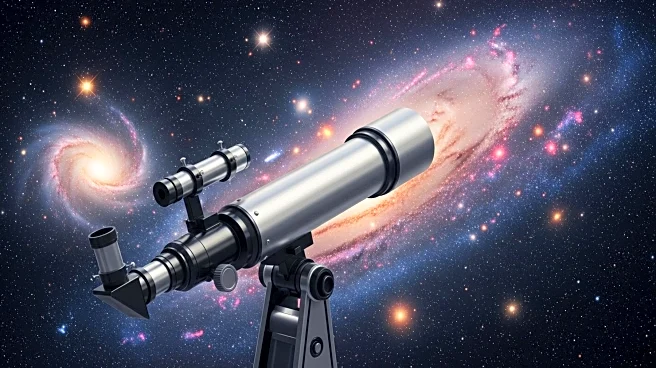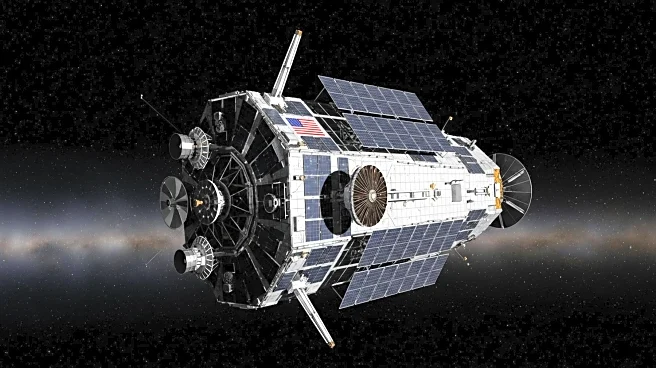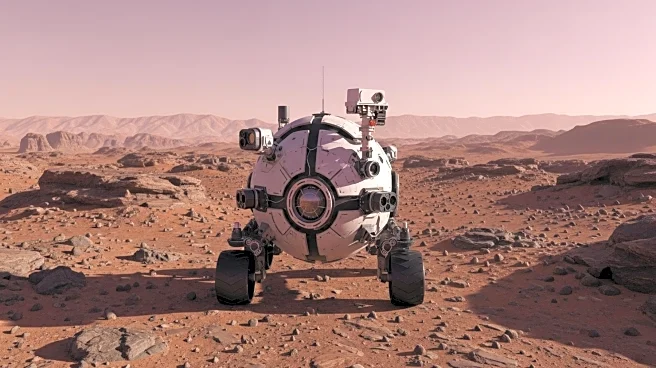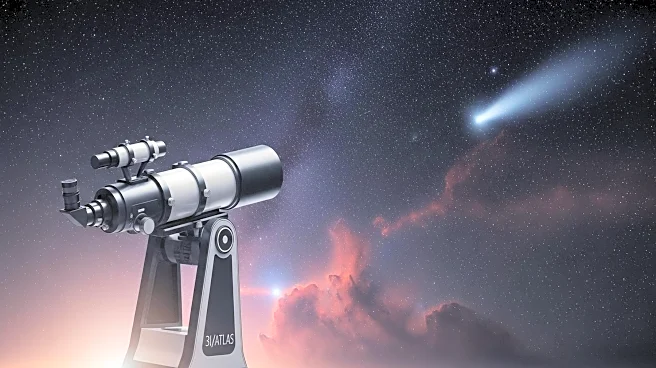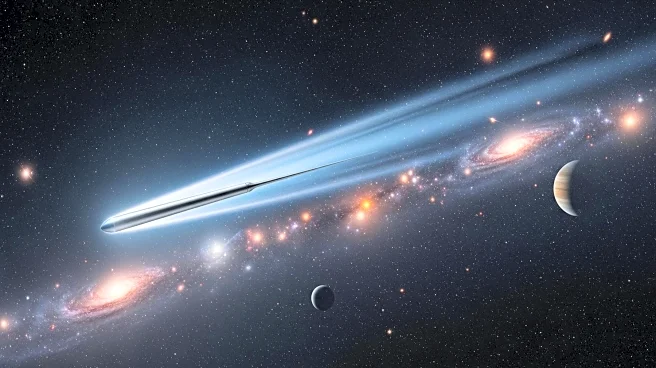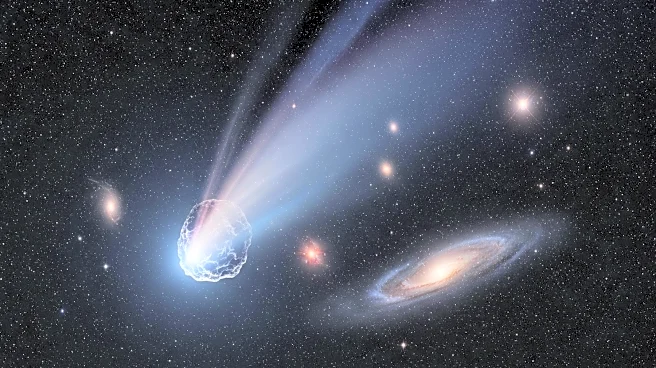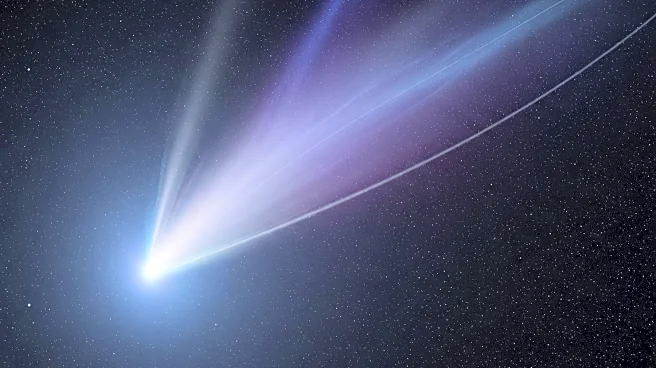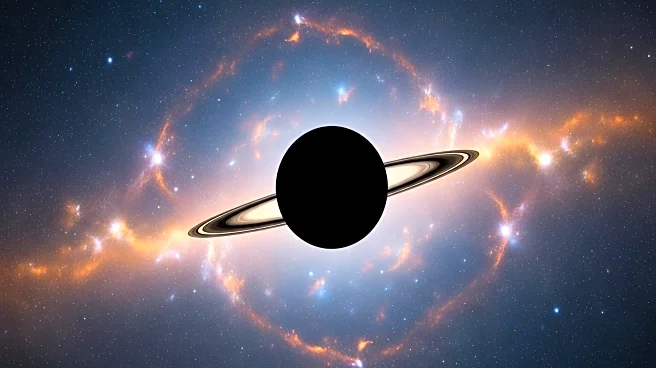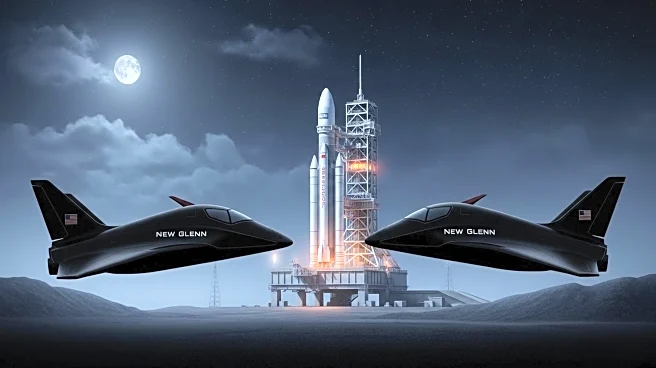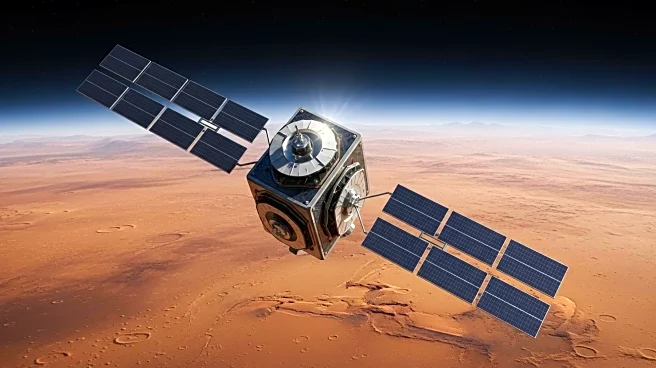What is the story about?
What's Happening?
NASA has confirmed the discovery of a rare interstellar object, designated 3I/ATLAS, currently moving through the solar system. This marks only the third confirmed interstellar visitor, following 'Oumuamua and 2I/Borisov. Initially identified by the Asteroid Terrestrial-impact Last Alert System (ATLAS), the object was classified as interstellar after further analysis by NASA and the International Astronomical Union. 3I/ATLAS is traveling at approximately 134,000 mph and is expected to make its closest approach to the Sun on October 30, passing inside the orbit of Mars. Initial observations suggested it might be an asteroid, but new data indicates comet-like activity, including a coma and a short tail.
Why It's Important?
The discovery of 3I/ATLAS is significant for planetary science, offering insights into interstellar objects and their characteristics. As only the third confirmed interstellar object, it provides a unique opportunity to study material from another star system. The object's comet-like features could help scientists understand the composition and behavior of such visitors. The event underscores the potential for more interstellar objects to pass through the solar system, suggesting they may be more common than previously thought. This could lead to advancements in detection methods and increased opportunities for scientific study.
What's Next?
As 3I/ATLAS approaches the Sun, it is expected to brighten, making it more accessible for observation by amateur astronomers. NASA plans to continue monitoring the object, with opportunities for data collection from ground-based and space telescopes, including the James Webb Space Telescope. The comet will temporarily be obscured by the Sun's glare but will reappear in December as it exits the solar system. Scientists are preparing for brief observation windows to gather as much information as possible before the object leaves the solar system.
Beyond the Headlines
The discovery of 3I/ATLAS may challenge existing assumptions about the frequency of interstellar objects passing through the solar system. A study suggests that many such objects may go undetected due to their small size or faintness. The event highlights the need for improved detection technologies and methods to identify and study these cosmic wanderers. Understanding interstellar objects can provide valuable insights into the formation and evolution of planetary systems beyond our own.
AI Generated Content
Do you find this article useful?
